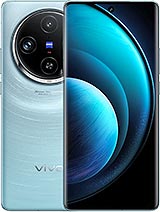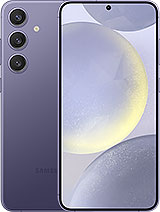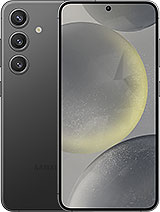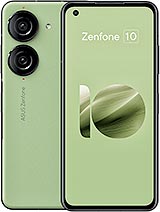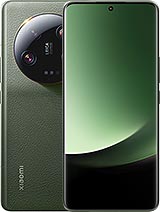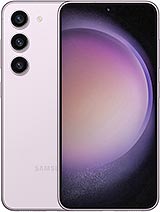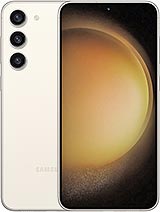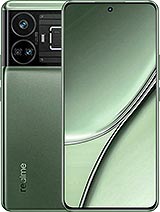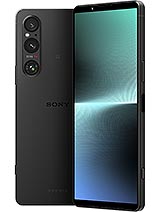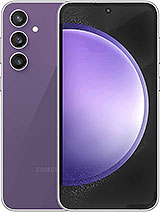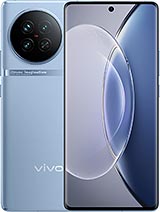Samsung Galaxy S24+ review

One UI 6.1 with Galaxy AI
Samsung's S24 family is launching with Samsung's latest One UI 6.1 on top of Google's latest Android 14. Despite the fairly small ".1" numbering update, One UI 6.1 brings some new stuff to the table - most notably Galaxy AI features, which we hope will eventually trickle down to other Galaxy models as well.
As part of its green initiative, Samsung is quite ambitious with the S24 generation, offering a massive seven years of OS, One UI updates and security patches. That's up from four years of OS updates and five years of security patches on the previous S23 flagship generation.
The Galaxy S24 devices can eventually expect to end their support cycle running Android 21, whatever that ends up being called. Hopefully, many S24 family devices will stay out of landfills for much longer, perhaps with a mid-cycle battery replacement. Here's hoping.
You can read more about the new One UI 6.1 features in our dedicated One UI 6.1 review.
Performance and benchmarks
Samsung went with a dual chipset arrangement for the Galaxy S24 generation. The S24 Ultra only comes with a Snapdragon 8 Gen 3 chipset by Qualcomm. In contrast, the regular S24 and S24+ come with either the Snapdragon 8 Gen 3 or Samsung's own Exynos 2400.
If you get an S24/S24+ in the USA, Canada or China, a Snapdragon 8 Gen 3 will be inside. For the rest of the world, including our review units, the S24 and S24+ come with an Exynos 2400.
As usual, Samsung remains mum on the topic, even going as far as not to mention a chipset in some of its official specs sheets. As far as the Korean giant is concerned, the two chips are feature and performance-equivalent.

As we said, we have the S24 and S24+ here with the Exynos 2400 - a brand-new Samsung chip made on a 4nm 4LPP+ (EUV) manufacturing node. In terms of CPU configuration, you are looking at one primary ARM Cortex-X4 core, clocked at up to 3.2 GHz, two more 2.9 GHz Cortex-A720 cores, another three Cortex-A720 cores, working at up to 2.6 GHz and finally, four efficiency Cortex-A720 cores, working at up to 1.95 GHz.
On the GPU side, the Exynos 2400 has an Xclipse 940 GPU. It is based on AMD's modern RDNA 3 architecture. The whole thing is clocked at 1,109 MHz, offering around 3,407 GFLOPS of FP32 performance.
For some rough reference, that should be comparable to the iGPU performance of an 8-core Apple M1 chip or the integrated graphics of an Alder Lake Intel CPU.
In mobile terms, the Snapdragon 8 Gen 3's Adreno 750 is rated for similar performance, and so is the Immortalis-G720 MC12 inside the MediaTek Dimensity 9300. There is an NPU on board, just like there is one inside the Snapdragon 8 Gen 3.
The Exynos 2400 is paired with LPDDR5X RAM inside the S24 and S24+. The Galaxy S24+ is always available with 12GB RAM regardless of whether you get the 256GB or 512GB storage variant. That's a nice little upgrade over the 8GB of last year's S23+.
The base 128GB and 256GB versions of the vanilla S24 come with 8GB of RAM. You can also get the phone with 12GB RAM with 256GB and 512GB of storage. If you buy the base 8GB/128GB vanilla S24, you will end up with UFS 3.1 storage chips. We recommend getting the 256GB tier as a minimum so you can enjoy the faster UFS 4.0 storage.
The Galaxy S24+ is always available with 12GB RAM regardless of whether you get the 256GB or 512GB storage variant. That's a nice little upgrade over the 8GB of last year's S23+. Our Galaxy S24+ review unit is the 12GB/512GB version.
Let's start with some CPU benchmarks and GeekBench. The Exynos 2400 actually looks very comparable to the Snapdragon 8 Gen 3 in this department. Both the single-core and multi-core scores of the two are the same (within the margin of error).
Let's start with some CPU benchmarks and GeekBench. The Exynos 2400 actually looks very comparable to the Snapdragon 8 Gen 3 in this department. Both the single-core and multi-core scores of the two are within the margin of error.
There is still no touching Apple's Bionic line chips, even the older A16 in single-core performance, while the difference between the Exynos 2400 and the Apple A17 Pro in all-core performance is pretty negligible. The MediaTek Dimensity 9300 seems to have a noteworthy lead in multi-core testing. But even that doesn't necessarily translate into tangible real-world results.
When it comes to comparing with last year's Snapdragon 8 Gen 2, as found inside the Galaxy S23 and S23+, we definitely get a nice bump in performance.
As for any tangible difference between the smaller S24 and the bigger S24+, we wouldn't say there is anything beyond an insignificant difference between the two with burst CPU loads, as expected. Any difference in cooling potential will show up in the thermal-throttling test.
AnTuTu is a much more compound benchmark that also takes into account things like memory and storage. In the older V9 test, there does seem to be a bit of a gap between the regular S24 and the S24+ in favor of the plus, even if it's not that large. Then again, V9 also positions some Snapdragon 8 Gen 2 devices higher than the S24+ and its Exynos 2400, so we wouldn't necessarily trust these results.
The newer AnTuTu V10 paints a more believable and expected performance picture with a few Snapdragon 8 Gen 3 devices overtaking the Exynos 2400-equipped Galaxy S24 and S24+ by a bit, though not by a lot. There is practically no difference between the two S24 models.
The Dimensity 9300 is leading the pack, Snapdragon 8 Gen 2 devices are trailing behind.
What about GPU performance, then? Well, the Adreno 750 inside the Snapdragon 8 Gen 3 does seem to pull more frames in the older and less stressful Wild Life and Wild Life Extreme tests.
The Dimensity 9300 and its Immortalis-G720 MC12 seem to do about as well in these tests, and the Exynos 2400 and its Xclipse 940 do lag a bit behind.
The gap in performance between the Snapdragon 8 Gen 1 and Exynos 2200 in the S22 generation appears to be a bit bigger than the difference between the Exynos 2400 and the Snapdragon 8 Gen 3 even though comparing performance across generations with different OS and benchmark versions is not ideal. Also, we are yet to see how the Snapdragon 8 Gen 3 performs inside the S24 and S24+ in particular, but the initial results are promising, and, this year, the Snapdragon and Exynos do kind of seem a bit closer in performance to each other.
Plus, once you move up to the modern Solar Bay test with its ray tracing workloads, the difference between the Snapdragon 8 Gen 3 and the Exynos 2400 seems to practically disappear, which is encouraging to see.
Thermal-throttling
The Galaxy S24+ crams a lot of power inside its body, but at least there is a bit more room to work with than on the vanilla Galaxy S24. Unsurprisingly, the bigger S24+ managed to handle the heat output of the Exynos 2400 slightly better than its smaller sibling.
Samsung did say that it is upgrading its vapor chamber cooling solutions across the S24 lineup - possibly to account for the increased heat production by the new chipsets.
After running some actual torture tests, we can say that the S24+ performs about as well as we expected in the thermal department and about or perhaps slightly worse than last year's S23+ model. So Samsung clearly expanded the vapor chambers out of necessity rather than in pursuit of better-sustained performance.
The phone eventually throttled down to around 64% of its total CPU performance and around 52% of its GPU performance.
We've definitely seen better, but we wouldn't say we are disappointed either. The decline in performance is gradual, with no sudden and jarring dips. Also, while the phone's frame got quite toasty in our testing, it was never too hot to hold.
Connectivity
The Galaxy S24 and 24+ are dual-SIM 5G devices. They can do concurrent SA and NSA Sub-6 on two SIM cards. Depending on the market, you probably won't get to choose your actual physical SIM configuration. Most regions seem to get two physical Nano-SIM slots and an option to attach an eSIM card through software.
Variants do exist with a single physical Nano-SIM slot and eSIM as the only "second line" option. And as far as we can tell, at least some US units are eSIM only, without physical slots.
While rumors did point in the opposite direction, the S24 and S24+ lack satellite connectivity.
There is no microSD card slot on the SIM tray either device.

For local connectivity, the S24 and S24+ get Wi-Fi 6e. At least it is tri-band Wi-Fi 6, which means you get to benefit from the fresh new 6GHz band. Wi-Fi 7 is only available to the S24 Ultra, though.
Bluetooth is version 5.3 with LE support. You get NFC on board, but there is no FM radio or IR blaster.
We also tested the capabilities of the USB ports on the phones. Both the S24 and S24+ have Host/OTG support. Also, both of their ports offer Display Port 1.2 over USB Alt mode. Regarding data transfer, the Type-C ports are backed up by a USB 3.2 Gen 1 connection, which tops out at 5 Gbps transfer speeds - not too shabby at all for a smartphone.
The Samsung Galaxy S24 and S24+ have a pretty long list of on-board sensors. There is an STM LSM6DSVTR accelerometer and gyroscope combo, Sitronix STK33F11 light sensor, an AK09918C magnetometer, and an STM LPS22DFTR barometer.
To our surprise and disappointment, there is a virtual proximity sensor - Samsung Palm Proximity Sensor V2. It works quite reliably to turn off the display while in calls. Technically there does seem to be an actual hardware proximity sensor inside the phone, but it appears to be inaccessible by any third-party app without workarounds. The dialer appears to use the sensor, but that's about it. These Samsung proximity oddities aren’t new, however, and seem to date back at least to the S23 generation, where every phone, including the Ultra, has the same Samsung Palm Proximity Sensor V2 sensor that behaves in the same odd way.
Reader comments
- Pagan
- 18 Jan 2025
- gn}
One gets a decent exynos 2400 CPU, but a miserable 5G modem, where one can expect for the 4G to gradually give way to 5G,in the next 7 years of the software support. Kinda bleak existence with such an important piece of technology in one's daily...
- Samular
- 20 Dec 2024
- Nu7
Pls can I charge my new s24+ full with power bank for the first time without any negative effect now or in the nearest future. Thanks.
- Ruly
- 19 Nov 2024
- txp
You got nice strategy in this case and hope people does the same thing. However, we have to take attention too about updates that device will receive in the future which sometimes create another issue that needs to be solved again with another brand ...
